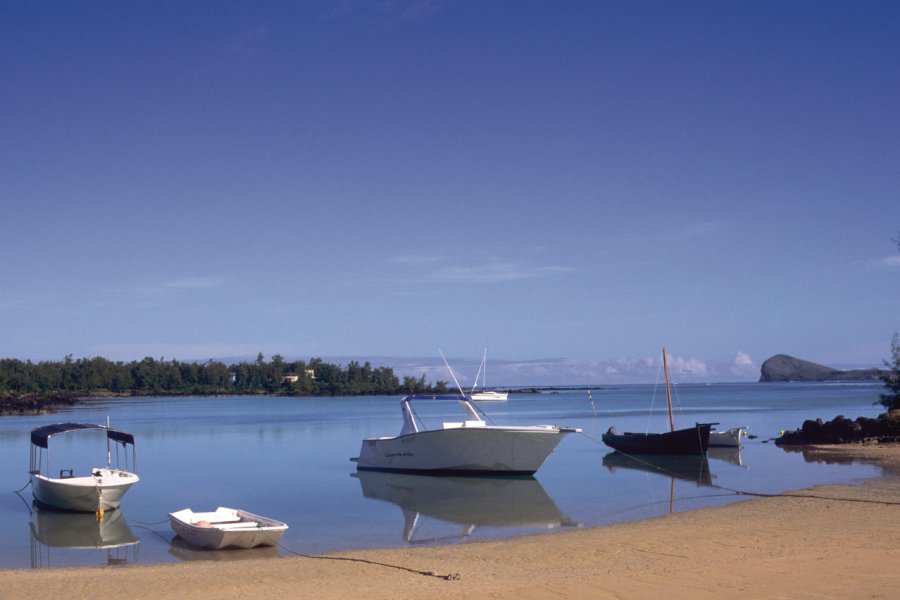Travel Guide Grand Gaube
Find an accommodation
Advertising
After Cap Malheureux, the wild coastline, with filaos and lawns falling into the sea, continues towards Grand Gaube. This is the start of the east coast. Stretches of sand become rarer, replaced by dark boulders. But there are a few beautiful beaches that bask in the sun, such as the arched beach at the LUX* Grand Gaube hotel and the more easily accessible Butte à l'Herbe beach just before the village of Grand Gaube. Quiet and not frequented by tourists (although a real estate project is underway), the latter is a popular spot for Mauritian families to gather for Sunday picnics.The village of Grand Gaube itself has no real center, just a cluster of small stores and tin-roofed huts drowned in exotic vegetation. Inhabitants daydream in the shade of the trees in a typical Mauritian Creole atmosphere. Quite traditional, the village still lives mainly from fishing and boat building. Indeed, Grand Gaube is still home to the traditional pirogues: fishermen's boats made, for the most part, from jackfruit wood. Although this species is increasingly hard to find, you can still see one of the island's last boat builders at work in the Saint-Joseph district.On the main road, take the first left after the seafront and you'll come to a pretty church with a white frame and a number of wood-painted biblical scenes in the nave.
What to visit Grand Gaube?
Suggested addresses Grand Gaube
Weather at the moment
Advertising
Organize your trip with our partners Grand Gaube
Transportation
Book your plane tickets
Car Rental
Boat rental
Accommodation & stays
Find a hotel
Holiday rental
Find your campsite
Tailor-made trip
Immersion travel
Services / On site
Activities & visits
Find a doctor
Find unique Stay Offers with our Partners
Pictures and images Grand Gaube
Other destinations nearby Grand Gaube
5 km away
25 km away








